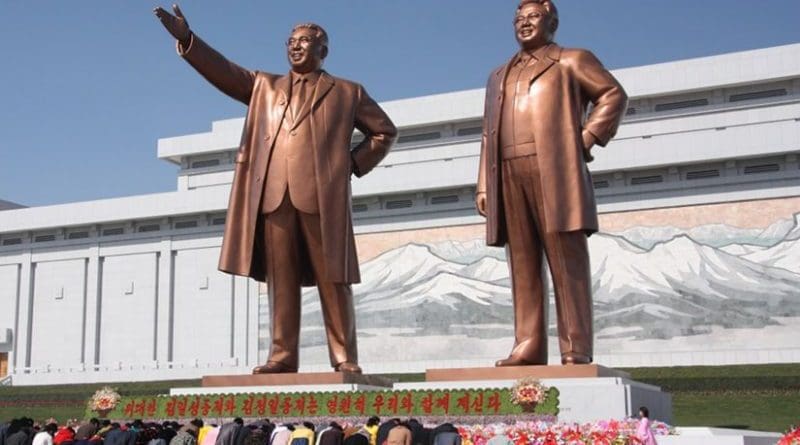Diplomacy With North Korea: A Real Benchmark For President Trump’s 100 Days – OpEd
By FPIF
By Christine Ahn*
The Trump administration recently announced an emergency meeting with 100 senators at the White House, where many speculated that Trump would disclose new intelligence to justify U.S. military action against North Korea, or else more sanctions.
Neither would constitute a success in the Trump administration’s first 100 days. What would is calling for diplomacy to avert nuclear war.
Any military action by the United States, however limited, would provoke a conflict that could instantly kill millions on the Korean peninsula — and threaten a regional nuclear war that could draw in Japan, China, and Russia. Every president before Trump considered a pre-emptive strike against North Korea, but they were quickly sobered by the reality that a military option would trigger a counter-reaction from Pyongyang. The Obama, Bush, and Clinton administrations all felt they couldn’t justify military action that would kill millions of South Koreans and endanger the 28,500 U.S. soldiers and 230,000 U.S. citizens residing there.
The most serious brush was in 1994, when President Clinton considered a pre-emptive strike on North Korea’s Yongbyon nuclear reactor. The Pentagon concluded — well before Pyongyang possessed nuclear weapons — that even limited action would claim a million lives in the first 24 hours, if North Korea retaliated with conventional strikes on Seoul. President Obama, too, considered surgical strikes, but as The New York Times journalist David Sanger reported, “the risks of missing were tremendous, including renewed war on the Korean peninsula.”
Stratfor, a global intelligence firm, also raises questions about the suggestion that it’s possible to destroy North Korea’s nuclear infrastructure in a single strike. “We simply do not have a comprehensive or precise picture of the North Korean nuclear program, especially when it comes to the number of weapons and delivery vehicles,” it says. “We do not know for sure where they are located or how well they are protected.” Pyongyang was sure to communicate this during its military parade on the 105th birthday of its founder Kim Il Sung, when it showcased its nuclear-capable and mobile Transporter Erector Launchers (TELs). Not a sitting duck, TELS would allow North Korea to fire missiles from anywhere, from a forest or mountain, against Japan and South Korea.
“There is no South Korean leader who thinks the first strike by the U.S. is okay,” said Suh Choo-suk, a senior research fellow at the Korea Institute for Defense Analyses. “The Security of South Korea is as important as that of the U.S.,” reminded Moon Jae-in, the leading South Korean presidential candidate. “No pre-emptive strike should be carried out without the consent of South Korea” — especially “in the absence of a South Korean president.” The second leading candidate Ahn Chul-soo cautioned, “We need to resolve the North Korean nuclear issue in a peaceful manner.”
Importantly, North Korea has threatened to retaliate only in response to a U.S. pre-emptive military strike. In its 7th Congress of the Workers’ Party of Korea, North Korean leader Kim Jong Un affirmed that his country would not use nuclear weapons unless its sovereignty was violated.
Last week, DPRK Vice Foreign Minister Han Song-ryol explained that his government’s pursuit of nuclear weapons and long-range missiles was “to protect our government and system from threat and provocation from the United States.” Former Secretary of Defense William Perry, who helped negotiate a freeze of North Korea’s nuclear program during the Clinton administration, agrees: “I believe that the danger of a North Korean ICBM program is not that they would launch an unprovoked attack on the United States — they are not suicidal.”
President Trump must avoid at all costs a direct military confrontation with North Korea, which has a long history of engaging in brinksmanship. The United States has been successful in defusing past crises by working in partnership with U.S. allies in the region. Today, China calls for restraint, and South Korea is urging a diplomatic solution. That diplomatic solution must include a formal resolution of the Korean War, which was only temporarily halted by a ceasefire when North Korean and American military commanders signed the Armistice Agreement in 1953.
President Trump could demonstrate his art of deal making by advancing the only solution that’s ever worked: diplomacy and engagement.
Foreign Policy In Focus columnist Christine Ahn is the international coordinator of Women Cross DMZ, a global movement of women mobilizing for peace in Korea.

